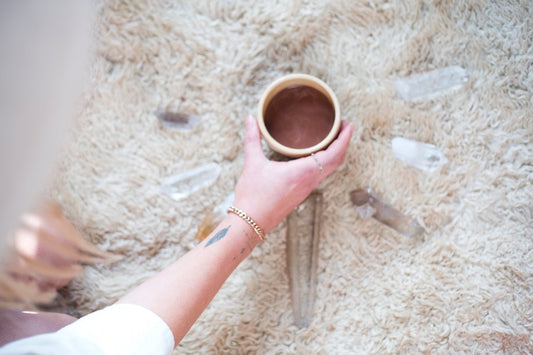Have You Heard Of "Raw Cacao"?
There is much confusion surrounding this terminology that has been abused by marketers and is complicated when applied to cacao. We’ll help you sort through it all here.
Why “raw cacao” in the first place?
“Raw” first became a buzzword for a healthy lifestyle when the concept of dieting with just fruits and vegetables was introduced. As part of a cleanse, eating just high quality and uncooked fruits and vegetables could be enormously beneficial. “Raw” set a standard of requiring that none of the food eaten was heated to above 116 degrees Fahrenheit.
Of course, people naturally wanted to eat chocolate as part of the raw lifestyle, so the concept of “raw chocolate” was introduced. Much industrial cacao is processed with high heat, to achieve uniformity and mask bad flavors from low quality inputs. The sourcing of industrial cacao is also questionable, and “raw cacao” connotes simplicity, quality and purity in the chocolate sourcing. So the idea of “raw chocolate” was enormously popular.
However, as you’ll learn soon, while the concept of “raw” works great for fruits and vegetables, it is very problematic when applied to cacao for a number of reasons. We’ll break those down here.
The Taste of Chocolate Can’t Technically Be Raw
It is VERY rare to find truly raw cacao. Most modern cacao is fermented after it is harvested, and the fermentation temperatures need to reach 124F for proper flavor development, which is beyond the raw threshold of 116F.
This simple understanding of the fermentation process makes it clear that “raw cacao” is misleading marketing, from a technical perspective. We’ve met people who claim all their cacao never exceeds the 116F threshold during fermentation. We find this to be a very unlikely and unverifiable claim, as cacao fermentation is typically conducted in wooden boxes, and continuous monitoring for a full week would be prohibitive. Does the company get rid of the perfectly good cacao if it exceeds 116F?
Cacao Actually Does Quite Well With Heat
The raw foods temperature threshold of 116F was developed specifically to protect certain enzymes and compounds that are present in uncooked fruits and vegetables. Both fruits and vegetables have a high water content. Dried cacao beans, on the other hand, have a water content of less than 8%. As a result, cacao actually does quite well with heat, and instead of losing potency when heated, it undergoes an alchemical activation when they are roasted.
Roasting brings out the flavor of the cacao beans, and dries out the remaining moisture. We highly recommend eating a raw cacao bean side by side with a roasted cacao bean - the flavor difference is enormous.
While un-roasted cacao is certainly an improvement over industrial cacao roasting which uses high temperatures to create uniform results out of inferior cacao inputs, it's missing the magic and the flavor that the fire element introduces. We believe strongly that making good ceremonial cacao involves taking the cacao through a four element transformation as we work with it, including fire, air, earth, and water. So of course, we can't leave out the fire!
Indigenous Wisdom: It’s All About Balance.
Indigenous peoples of the Americas have been working with cacao for many hundreds of years. In no instance have we found “raw cacao” practices. In fact, we’ve encountered a celebration of the process bringing the alchemy of the fire element into chocolate making. Indigenous cacao traditions all over central and south America toast their cacao at low temperatures using a clay comal and the coals from an open fire. We believe there is wisdom in these indigenous preparations of cacao, so we too lightly toast our cacao, so it is not raw.
The key here is balance. Roasting cacao beans is a very delicate process, and it is true that overheating them will damage them. It takes enormous skill to roast cacao beans using traditional methods, which is why the elders of the community were tasked with carefully stirring and rotating the cacao as it was being roasted to prevent any of the beans from burning.
The same applies to modern chocolate making - with premium quality beans, there is no need for high temperatures. Just a low temperature roast is sufficient to activate the cacao beans and introduce so much delightful flavor into the chocolate making process. As we’re sure you’ll experience from our finished product and the many reviews on our website, our low temperature roast does not negatively affect the energetic integrity of the cacao.
See our article on the Cacao Elemental Spiral to learn why ceremonial cacao requires a proper balancing of the four elements of earth, water, fire, and air. For ceremonial cacao we use only the minimal heat needed to bring out the natural flavors in our premium cacao.
Purity of Process
We’ve also found that people associate much more than temperature with the word raw. It implies a level of purity and connection in the chocolate making process.
We fully support and practice this ourselves, but we choose not to call it raw, because of everything we described above, there’s already a lot to unpack with that word. Rather, the purity of process and integrity in sourcing is part of our definition for ceremonial cacao.



